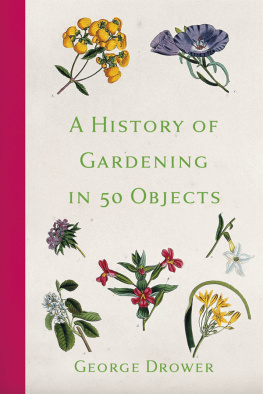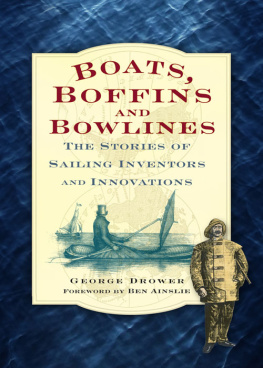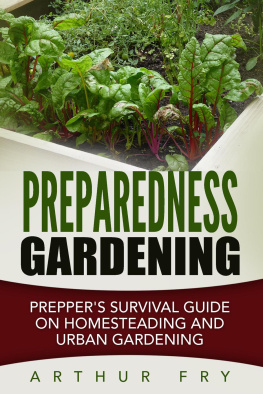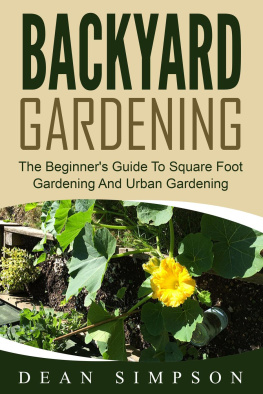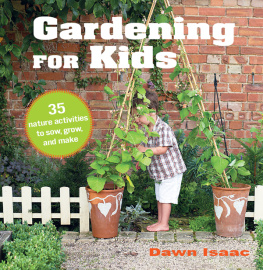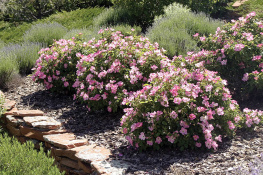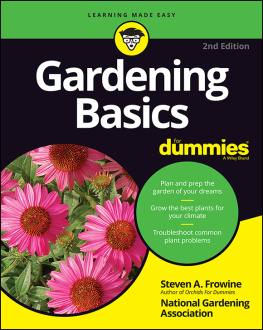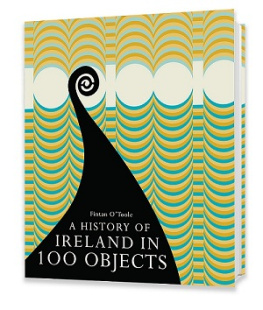George Drower - A History of Gardening in 50 Objects
Here you can read online George Drower - A History of Gardening in 50 Objects full text of the book (entire story) in english for free. Download pdf and epub, get meaning, cover and reviews about this ebook. publisher: The History Press, genre: Non-fiction. Description of the work, (preface) as well as reviews are available. Best literature library LitArk.com created for fans of good reading and offers a wide selection of genres:
Romance novel
Science fiction
Adventure
Detective
Science
History
Home and family
Prose
Art
Politics
Computer
Non-fiction
Religion
Business
Children
Humor
Choose a favorite category and find really read worthwhile books. Enjoy immersion in the world of imagination, feel the emotions of the characters or learn something new for yourself, make an fascinating discovery.
- Book:A History of Gardening in 50 Objects
- Author:
- Publisher:The History Press
- Genre:
- Rating:4 / 5
- Favourites:Add to favourites
- Your mark:
- 80
- 1
- 2
- 3
- 4
- 5
A History of Gardening in 50 Objects: summary, description and annotation
We offer to read an annotation, description, summary or preface (depends on what the author of the book "A History of Gardening in 50 Objects" wrote himself). If you haven't found the necessary information about the book — write in the comments, we will try to find it.
A History of Gardening in 50 Objects — read online for free the complete book (whole text) full work
Below is the text of the book, divided by pages. System saving the place of the last page read, allows you to conveniently read the book "A History of Gardening in 50 Objects" online for free, without having to search again every time where you left off. Put a bookmark, and you can go to the page where you finished reading at any time.
Font size:
Interval:
Bookmark:

A HISTORY OF GARDENING IN 50 OBJECTS

First published as Gardeners, Gurus & Grubs: The Stories of Garden Inventors and Innovations, 2001
The History Press
The Mill, Brimscombe Port
Stroud, Gloucestershire, GL5 2QG
www.thehistorypress.co.uk
George Drower, 2001, 2019
The right of George Drower to be identified as the Author of this work has been asserted in accordance with the Copyright, Designs and Patents Act 1988.
All rights reserved. No part of this book may be reprinted or reproduced or utilised in any form or by any electronic, mechanical or other means, now known or hereafter invented, including photocopying and recording, or in any information storage or retrieval system, without the permission in writing from the Publishers.
British Library Cataloguing in Publication Data.
A catalogue record for this book is available from the British Library.
ISBN 978 0 7509 9188 9
Typesetting and origination by The History Press
Printed in Turkey by Imak
eBook converted by Geethik Technologies
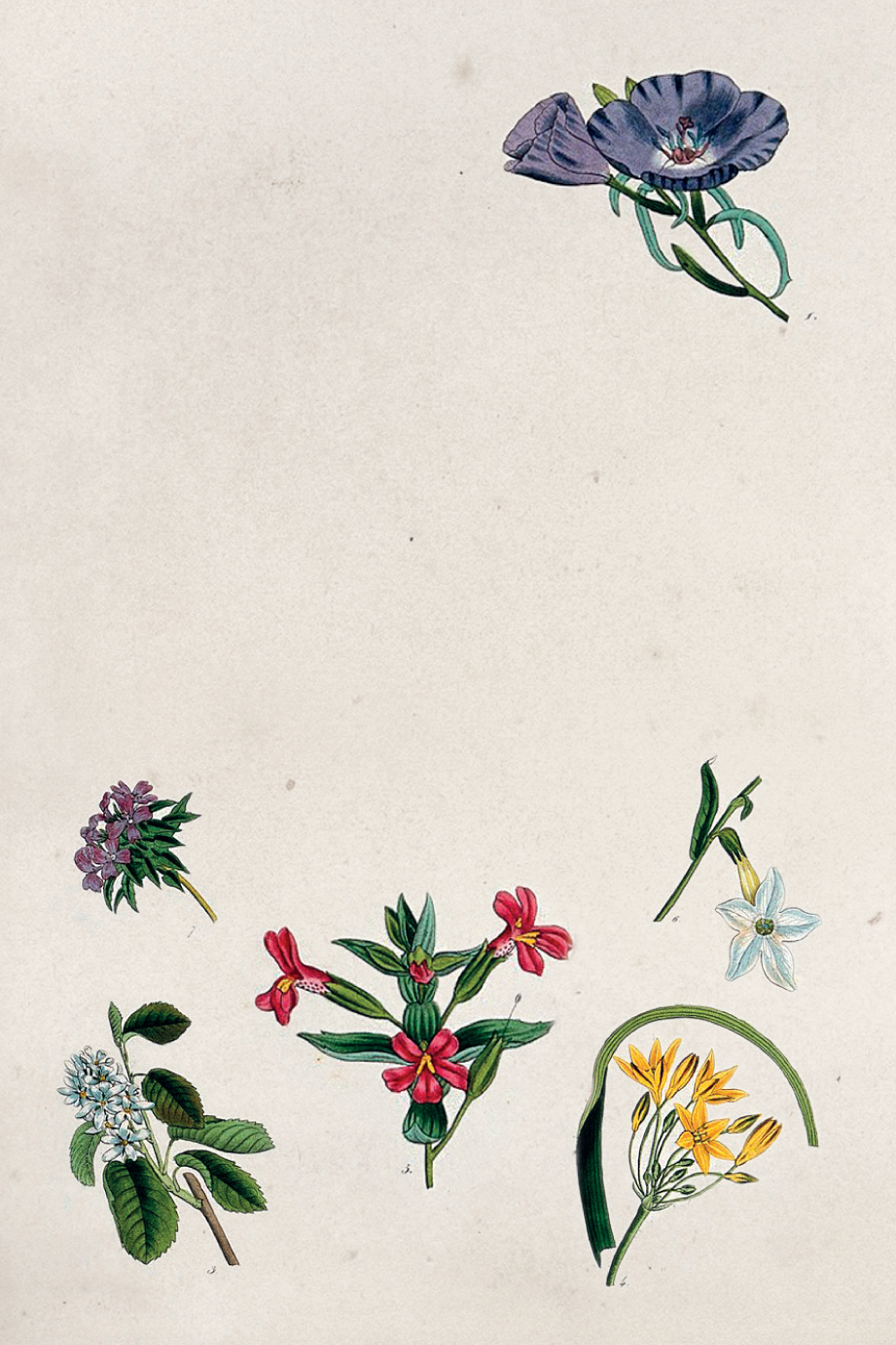

SINCE ANCIENT TIMES , when the earliest gardens were created, through the ages, enclosed spaces around homesteads have evolved into a diversity of forms. They have ranged from ornamental patches to informal wild cottage surrounds, from noblemens country house estates to urban gardens, and from allotment plots to simple plant containers. We have all become beneficiaries of centuries of horticultural developments, be it in the form of techniques, such as cultivation of blossoms and large fruits; technologies, like weed control and lawn-cutting devices; the efforts of entrepreneurs who introduced maintenance tools and even garden sports; and the ideas of visionaries who tore up rulebooks and created idyllic spaces.
An advantage of viewing gardenings hundreds of years of history from a perspective of fifty objects is that the term objects usefully covers all the relevant horticultural elements: living forms, such as inventors, plants, trees, shrubs, fruits and vegetables; shapes of garden and structural features; and ideas, methods, techniques and written works. There are objects which were synonymous with, and characteristic of, distinct historical eras: flowerpots first appeared in the Land of the Pharaohs; ancient Rome had lawns and trellises; in Renaissance times there were orangeries and sprinklers; eighteenth-century landscape gardens were supplied with trees and shrubs by mail-order nurseries; picturesque plots were trimmed with secateurs; gardenesque green spaces had hosepipes and rhododendrons; and in suburban twentieth-century gardens there was enjoyment to be had from fibreglass ponds and flame-guns.
This approach to the stories of gardening in terms of objects, interestingly, brings to light the occurrence of wider historical patterns and themes. Some of the most familiar components of gardens are essentially adaptations from other disciplines: the simple wheelbarrow is a distant development of an ancient Chinese device used for transporting military supplies; the Flymo is an evolution of the passenger-carrying hovercraft; the first cylindrical lawnmowers design derived from a factory-based wool machine; and even the monster leylandii tree is a form of adaptation, albeit an accidental natural one, originating from North American trees which happened to be in Britain in 1888.
For centuries gardening has brought attention to environmental issues that might otherwise have gone unnoticed. In his 1725 treatise on gardening practices, Richard Bradley noted how, as early as Roman times, Columella had reported cultivatable soils being overworked. When doing his dazzling folio illustrations for eighteenth-century garden owners, Mark Catesby recorded the near extinction of brasiletta trees in the Bahamas and native pigeons in North America. John Bartrams Philadelphia nursery spared the native Frankinia tree from disappearing. One of many consequences of Eve Balfours inspirational 1943 publication The Living Planet, and the subsequent creation of the Soil Association, was that amateur horticulturalists applied those concerns about healthy vegetables and the overuse of chemicals to their own gardens.
Certain garden objects have unwittingly been a factor in the causing of environmental damage. In the process of making John Bennet Lawes superphosphate fertiliser, the sulphuric acid used in its manufacture ruined the health of those who lived near his Deptford factory. Flame-guns needlessly killed insects and polluted the air with toxic fumes. A consequence of baled peat compost, and Gro-bags for balconies, was excavation damage to large areas of bird-nesting wetlands. The good-natured Dr Nathaniel Ward could not have envisaged that his Wardian cases by stimulating a Victorian craze for ferns to go in similar terrariums were going to cause such excessive fern gathering that it would threaten endangered species of fern in Scotland.
Wardian cases were raffishly used by Robert Fortune to smuggle 20,000 tea-plant seedlings from China and thereby start Indias tea industry. There were other objects in the gardening world associated with nefarious conduct. William Forsyths magic plaster for reviving trees was unmasked as a fraud. The Marquis de Chabanness invention of a revolutionary greenhouse heating system seems to have been borrowed without permission from a Parisian physician. Even the first live pineapple in England, celebrated in 1661 with an oil painting as having been grown by King Charles IIs gardener, was that year observed by John Evelyn to have been imported potted from the Caribbean.
These fifty stories of how and why objects were devised are arranged according to subject in the books eleven sections. Gardening objects being readily synonymous with horticultural equipment, the book opens with Tools of the Trade, which shows how particular implements were ingeniously devised by adaptation. The next section, Plant Finders, considers how by audacity and initiative intrepid explorers such as Ernest Henry Chinese Wilson brought their discoveries to the public. The Water Features section shows how the development of aquatic features, since ancient Greek times, has brought merriment to gardens. Ambitions for prestige are found to be motivating factors for Growing Exotics in challenging circumstances. The objects relevant to Lawns are notably derived from other ideas and contraptions. The objects in Supports, Climbers and Hedges were, in various forms, imported from overseas sometimes controversially. The Fertilisers and Pest Controls section considers the ingeniously practical objects that eradicated garden nuisances and improved soil conditions. Garden Writings considers the horticultural authors who used their literary works to make their recommendations more influential. Some of the objects in Gardening Movements were entertaining crazes, others such as Titus Salts allotments were remarkably altruistic. The penultimate section considers some distinguished garden Nurseries that supplied the buying public with learned advice and specialist ranges of plants. The development of Containers particularly in urban locations has long enabled millions to enjoy forms of gardening of their own.
Font size:
Interval:
Bookmark:
Similar books «A History of Gardening in 50 Objects»
Look at similar books to A History of Gardening in 50 Objects. We have selected literature similar in name and meaning in the hope of providing readers with more options to find new, interesting, not yet read works.
Discussion, reviews of the book A History of Gardening in 50 Objects and just readers' own opinions. Leave your comments, write what you think about the work, its meaning or the main characters. Specify what exactly you liked and what you didn't like, and why you think so.

